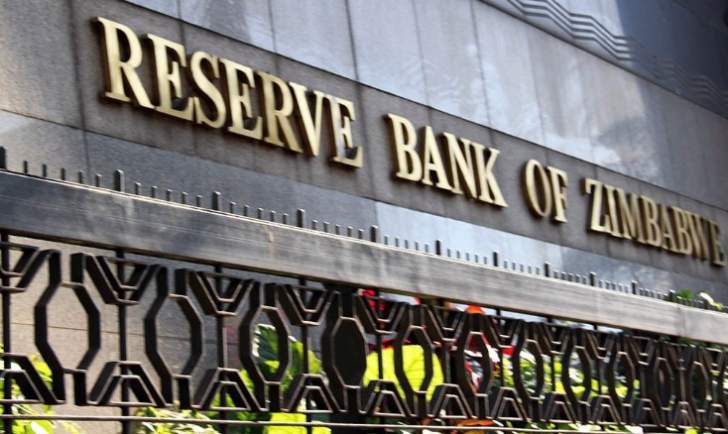Zim current account balance to bulk 22 percent
THE Reserve Bank of Zimbabwe (RBZ) says the country’s current account balance is expected to grow from a surplus of US$501,2 million in 2024 to US$611,6 million in 2025, on the back of anticipated gains in export earnings and robust inflows of some remittances.
According to the RBZ, enhanced foreign currency inflows resulted in improved current account performance, which increased from a surplus of US$133,9 million in 2023.
A current account balance is a measure of a country’s international trade. It is obtained by adding the value of a country’s net exports, net income from abroad and net current transfers.
Zimbabwe’s economy, driven by agriculture and mining, is projected for robust growth and export earnings in 2025 owing to a favourable agricultural season, increased investments in critical sectors and high international commodity prices, particularly for gold.
This growth is expected to positively impact the country’s balance of payments and provide essential liquidity to support the economy.
Presenting the 2025 Monetary Policy Statement recently, the RBZ Governor, Dr John Mushayavanhu, said: “The country’s current account balance is expected to further improve from a surplus of US$501,2 million in 2024 to a surplus of US$611,6 million in 2025 reflecting anticipated stronger export performance and continued robust personal transfer inflows (remittances).”
Economist Mr Tinevimbo Shava on Thursday said current account surplus is important as it provides policymakers with more flexibility to implement fiscal policies that support economic growth and development.
He said this leads to an accumulation of more foreign exchange reserves, which can be used to stabilise the currency, pay for imports and service foreign debt.
“A growing current account surplus can reduce a country’s reliance on foreign borrowing, minimising its exposure to exchange rate fluctuations and reducing the risk of economic instability.
“It also leads to increased investment in the economy, as foreign investors are attracted to a country with a strong trade position and a country with a current account surplus is better equipped to withstand external economic shocks, such as global economic downturns or trade disruptions,” said Mr Shava.
Zimbabwe’s merchandise exports are projected to increase in 2025, driven by growth in Platinum Group Metals (PGMs), lithium and critical agricultural exports.
According to the RBZ, high commodity prices are expected to persist in 2025, mainly due to the continuation of geopolitical tensions and robust demand for metals, driven by clean-energy investments in solar and hydro power, among others.
On the other hand, gold production is anticipated to rise by four tonnes to 40 tonnes in 2025, up from 36 tonnes in the prior year, according to the apex bank.
This positive outlook follows a significant increase in total foreign currency receipts, which reached US$13,3 billion in 2024, representing a 21 percent increase from US$11 billion in 2023.
Export proceeds contributed 59,2 percent, at US$7,9 billion, from US$6,1 billion realised in 2023, mainly driven by gold and tobacco while diaspora remittances contributed 16,2 percent, at US$2,2 billion.
Gold exports recorded a remarkable increase of 37 percent to US$2,5 billion in 2024, from US$1,8 billion in 2023, largely driven by both higher production volumes and favourable global gold prices.
Loan proceeds accounted for 11,9 percent contributions, at US$1,6 billion.
Mineral exports, which comprised the largest share of merchandise exports, grew by 7,8 percent, from US$5,4 billion in 2023 to US$5,9 billion in 2024.
The improved foreign currency inflows resulted in improved current account performance.
However, the country’s import bill rose by 4,9 percent to US$9,1 billion in 2024, from US$8,7 billion in 2023.
This was driven by increases in imports of food, fuel, raw materials, vehicles and manufactured goods.
The food import bill rose by 55,2 percent to US$976,1 million in 2024, from US$628,9 million in 2023, underpinned by grain imports, necessitated by the El Niño-induced drought that adversely affected the 2023/2024 agricultural season.
Maize imports increased to US$574,6 million in 2024 from US$149 million in 2023.
Although Zimbabwe’s total import bill rose, it was somewhat mitigated by declining prices for edible oils and fertilisers, which helped to partially offset the overall increase.
The Minister of Finance, Economic Development and Investment Promotion, Professor Mthuli Ncube, in his 2025 National Budget presentation, projected the country’s economy to grow by six percent in 2025, emanating from the recovery of the agriculture sector, improved electricity generation and increased output from the mining sector.
“In the outlook, economic growth is now projected at six percent in 2025, slightly below the initial forecast of 6,5 percent. The projected strong economic performance is expected to emanate from the recovery in the agriculture sector, which is poised to grow by 12,8 percent, electricity generation by 10.6 percent, information technology by 9,9 percent and mining by 5,6 percent,” said Minister Ncube.-ebsienssweekl











